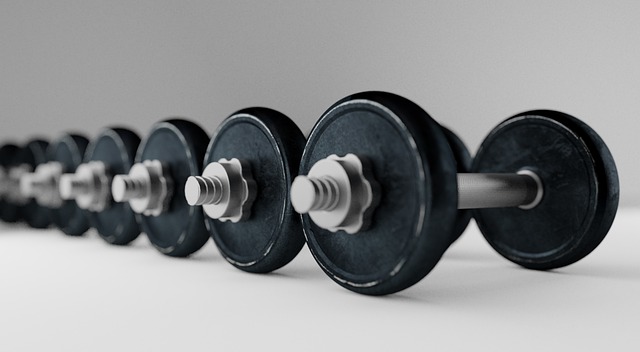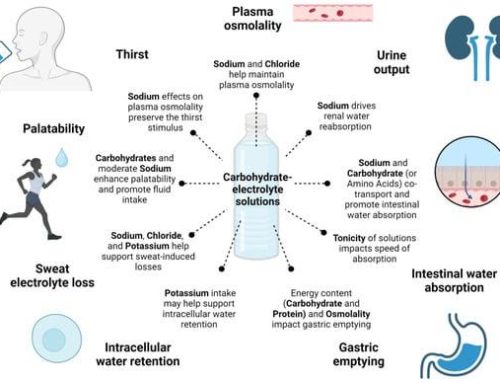Are you tired of feeling like you’re not getting the most out of your weight lifting routine? Do you ever find yourself gazing longingly at that box of donuts before heading to the gym? Well, I’ve got good news – turns out, you don’t need to fuel up before pumping some iron. In fact, weight lifting on an empty stomach might just be the secret ingredient in maximizing your gains. So put down the bacon and eggs and prepare to lift without the burn of breakfast. Trust me, your muscles will thank you.
Contents
- 1 1. Introduction to Weight Lifting on an Empty Stomach
- 2 2. Potential Benefits of Fasted Weight Lifting
- 3 3. Pre-Workout Strategies to Maximize Results
- 4 4. Post-Workout Nutrition to Support Muscle Recovery
- 5 5. Best Practices for Incorporating Fasted Weight Lifting into Your Routine
- 6 Lift like a Champ with an Empty Stomach!
1. Introduction to Weight Lifting on an Empty Stomach
Let’s cut the crap and get straight to the point. You’re here to know whether weightlifting on an empty stomach is worth the hunger pains or not. Well, the answer is not a plain yes or no. It depends on a few factors like your ultimate fitness goal, body type, and the intensity of your workout.
First off, let’s address the elephant in the room. Working out with no food in the belly is not a new concept. In fact, many athletes and bodybuilders practice it, calling it fasted training. They believe that exercising on an empty stomach burns more fat and enhances the body’s fat-burning capabilities. But hey, don’t get too excited just yet. The reality is that there is little significant scientific evidence to back up this claim.
Moreover, there are some downsides to working out on an empty stomach. Working out with no fuel in the body can lead to dizziness, fatigue, and even fainting. Your body needs glucose to perform high-intensity training, and if you don’t have enough glucose in the blood, your body will start breaking down muscle for energy. So, unless you’re a seasoned athlete or a masochist who loves pain, it’s better to have a light snack before hitting the gym.

2. Potential Benefits of Fasted Weight Lifting
Who knew that lifting weights on an empty stomach could actually be a good thing? Well, apparently, there are potential benefits of fasted weight lifting that you might want to know about. Here are a few:
- Burns more fat: When you lift weights in a fasted state, your body has to tap into stored fat for energy instead of glucose. This means you may burn more fat during your workout, which is great news for those trying to lose weight. Plus, you’ll feel like a badass for powering through your set without any food in your belly.
- Boosts metabolism: Fasting before a workout can also increase your metabolism. When you don’t eat before a workout, your body has to work harder to produce energy, which means you may burn more calories throughout the day.
- Improves insulin sensitivity: If you’re someone who struggles with insulin resistance, fasted weight lifting may be a game-changer for you. Studies have shown that fasting can improve insulin sensitivity, which means your body can better use the carbohydrates you eat later in the day.
Of course, fasted weight lifting isn’t for everyone. Some people find it too difficult to work out on an empty stomach, while others experience discomfort or dizziness. So, if you’re going to give it a shot, start slowly and listen to your body. And if all else fails, just enjoy the fact that you can eat a delicious post-workout meal guilt-free!
3. Pre-Workout Strategies to Maximize Results
So, you want to maximize your workout results? Well, you’ve come to the right place! Here are three pre-workout strategies that are guaranteed to get you pumped up and ready to crush your workout.
Caffeine is Your Friend
- Get your caffeine fix before hitting the gym. Caffeine has been shown to improve endurance, increase power, and even boost alertness.
- But don’t go too crazy – too much caffeine can lead to jitters and an upset stomach, which won’t help you during your workout.
- So, stick to a moderate amount and sip on a cup of coffee or tea 30 minutes before starting your workout.
Pump Up the Jams
- Music is a powerful motivator, especially during a tough workout.
- Create a playlist of high-energy songs that get you pumped up and ready to go.
- But be careful – blasting your music too loud can be distracting to other gym-goers and might earn you some side-eye.
Stretch it Out
- Stretching before a workout is crucial to avoid injury and improve flexibility.
- Foam rolling is a great way to release tension in your muscles and prep your body for exercise.
- So, take a few minutes to foam roll and stretch before jumping into your workout.
4. Post-Workout Nutrition to Support Muscle Recovery
It’s time to talk about the post-workout nutrition, folks! You know, the real reason why you hit the gym six days a week even though you secretly want to stay in bed binge-watching Netflix. Don’t worry, I won’t judge you. But if you want those gains, you gotta fuel those muscles.
First up, let’s talk protein. Nothing screams muscle recovery like a good ol’ protein shake. Now, you don’t have to chug a gallon of whey to see results. Just make sure you’re getting enough protein to support your muscles, without sacrificing taste. Mix that powder with some milk, throw in a banana and two scoops of peanut butter, and voila! You’ve got yourself a delicious shake that’ll make you forget all about that triple cheeseburger you had your eyes on.
Next on the menu, carbs. Yes, carbs! Don’t shy away from them just because Karen from HR said they’re evil. Your body needs carbs to replenish glycogen stores, and that’s a scientific fact. So, treat yourself to some good ol’ pasta or rice, and pair it with some veggies to balance things out. And if you’re feeling adventurous, add some hot sauce to really spice things up. Your taste buds and muscles will thank you.
Finally, let’s talk about hydration. Don’t be that person who leaves the gym and chugs a beer. Sure, it might taste good, but it’s not doing your muscles any favors. Instead, make sure you’re drinking enough water to replenish all the fluids you lost during your workout. And if you need a little flavor boost, add some lemon or cucumber to your water bottle. Trust me, it’ll make you feel fancy and hydrated at the same time.
So there you have it, folks. Post-workout nutrition doesn’t have to be boring or tasteless. Get creative with your meals and drinks, and remember: fuel those muscles like they’re about to lift a car. Oh, and don’t forget to stretch. Your future self will thank you.
5. Best Practices for Incorporating Fasted Weight Lifting into Your Routine
If you’re looking to shake up your exercise routine and try out fasted weight lifting, there are a few best practices to keep in mind. First and foremost, it’s important to understand the potential risks involved with fasted exercise. But don’t worry, we’ve got some tips to help you stay safe and successful.
1. Don’t Start with Heavy Weights
If you’re used to lifting heavy weights during your regular workout routine, it’s important to ease into fasted weight lifting with lighter weights. This will help your body adjust to the new demands being placed on it without risking injury or exhaustion. Plus, lifting lighter weights will help you focus on your form and technique, which is essential for preventing injuries down the line.
2. Stay Hydrated
Fasted exercise can be dehydrating, so make sure to drink plenty of water before and during your workout. And if you’re feeling thirsty, don’t wait until you’re parched – take a sip of water whenever you need it. Additionally, drinking electrolyte-rich fluids like coconut water or sports drinks can help replenish the nutrients that your body needs to stay healthy during exercise.
3. Listen to Your Body
Above all else, it’s important to listen to your body when incorporating fasted weight lifting into your routine. Pay attention to how you’re feeling during and after your workout, and adjust your routine accordingly. If you start to feel dizzy or lightheaded, take a break and give your body a chance to rest. And if you’re not feeling up to exercising at all, don’t push yourself – rest is an important part of any fitness routine.
Lift like a Champ with an Empty Stomach!
Congratulations, you’ve made it to the end of the article! Now, don’t go stuffing your face just yet. As we’ve learned, lifting weights on an empty stomach might be the key to unlocking those #gains.
So, next time you hit the gym, channel your inner lion and go for it on an empty stomach. But if you’re feeling weak, remember that not everyone has the stomach (get it?) for it. Listen to your body and feed it what it needs to lift another day.
Now, go forth and conquer those weights – but maybe bring a snack for afterwards. Happy lifting!








Leave A Comment